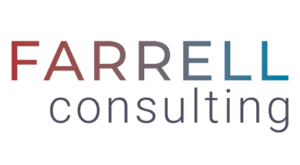Resistance to Change: Healthy Foundation
Note: this is a five-part series. Read Part 1 | Part 2 | Part 4 | Part 5
by Katherine Sanders and Patrick Farrell
INTRODUCTION
A common view of efficiency encourages leaders to focus on the initiative at hand and its immediate results. That approach to efficiency can prevent leaders from noticing the foundational work that would make results easier, more effective, or even possible. Resistance to change, when seen through that lens of efficiency, has leaders focused on it only in the context of a major change activity.
This part of our Resistance to Change series focuses on the seemingly “inefficient” work of building a healthy foundation for change in an organization. With a healthy foundation we are better prepared to take on emerging change initiatives because our entire community can anticipate resistance with less fear and defensiveness. The healthy foundation positions well-posed resistance as helping to make the change initiative better.
THE HEALTHY FOUNDATION
We create a healthy foundation by making consistent choices to build the constructive, co-creative dynamic at the core of change capacity. It becomes a reservoir of psychological safety, trust, and a shared understanding of what we’re working to accomplish together.
A healthy foundation means:
- Psychological Safety. People can speak up without fear.
- Important issues are discussed, not kept quiet.
- The reasons for decisions are clear to everyone.
We look for opportunities to build these attributes into the organization. With these in place we can forgive each other when we make mistakes (which are inevitable). The healthy foundation is equivalent to organizational resiliency because the mistakes we’ve made along the way show us we can work our way back from them. Our people trust our collective ability to innovate, learn and, refine and/or recover together.
A healthy foundation is not unique to a change initiative. The foundation could be helpful in almost everything our organizations do. This presents many opportunities whether change-related or not. For example, there can be considerable transference from honesty and transparency in discussing budgets to honesty and transparency in setting organizational goals or a change agenda.
It’s important to establish this healthy foundation before taking on a large-scale and/or ambitious change project. When we’re in the middle of a major change process it’s too late. We want our people to have something to rely on before we ask them to stretch.
FOR MORE INFORMATION
Sanders Consulting and Farrell Consulting specialize in helping teams implement change in higher education.





Leave a Reply
Want to join the discussion?Feel free to contribute!